In This Article
01 Introduction of AI Video Analysis
01 Introduction of Open Source AI Video Analysis
01 What is AI video analysis?
AI video analysis is the process of extracting meaningful information from videos using artificial intelligence techniques.It leverages deep learning and computer vision to automatically understand video content, identify objects, track motion, and recognize actions. This technology allows for efficient and in-depth examination of video data, offering insights that would be time-consuming or impossible to obtain through manual review. AI video analysis plays a crucial role in various applications, from security and surveillance to content analysis and research.
02 Is There AI that Can Analyze Videos?
Yes, absolutely! AI can definitely analyze videos, and the field is rapidly advancing. Numerous tools and techniques are available that demonstrate the power of AI in video understanding. From real-time object detection to video summarization and even deepfake detection, AI is capable of performing a wide range of video analysis tasks. Open-source AI video analysis tools are at the forefront of this innovation, providing accessible and customizable solutions for researchers, developers, and businesses alike.
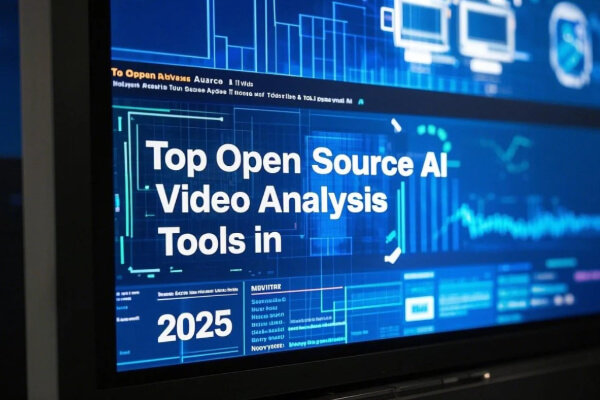
02 Best Open Source AI Video Analysis Tools in 2025
In 2025, the landscape of open source AI video analysis tools is rich and diverse. Below are some of the top tools that stand out for their capabilities and community support.
For quick access, here is a table summarizing these top open source AI video analysis tools:
| Tool | Description | Key Features | Best Use Cases |
|---|---|---|---|
| OpenCV | Versatile computer vision library | Broad algorithm collection, image/video processing, object detection | General video analysis, prototyping, education |
| YOLO | Real-time object detection model | High speed and accuracy, efficient architecture | Real-time object detection, surveillance, autonomous systems |
| TensorFlow | Comprehensive machine learning framework | Deep learning model development, scalability, video classification, action recognition | Complex video analysis projects, research, large-scale deployments |
| ELAN | Linguistic video annotation tool | Frame-by-frame analysis, precise annotation, video clipping | Conversation analysis, multimodal research, behavioral studies |
| TagLab | AI-assisted semantic segmentation tool | Interactive annotation, AI-powered tools (DEXTR, RITM), marine data focus | Marine image/video analysis, ecological research, biodiversity monitoring |
| OpenVINO | Deep learning model optimization toolkit | Model optimization, inference acceleration, hardware platform support | Real-time video analysis, edge deployment, performance-critical applications |
01 OpenCV: The Versatile Vision Library
OpenCV (Open Source Computer Vision Library) is a foundational and widely used open-source library for computer vision, including video analysis. It provides a vast collection of algorithms for image and video processing, object detection, and more. With OpenCV and Python, you can perform tasks like extracting frames from videos and implementing various video analysis techniques. Its versatility and extensive documentation make it an excellent starting point for anyone venturing into AI video analysis.
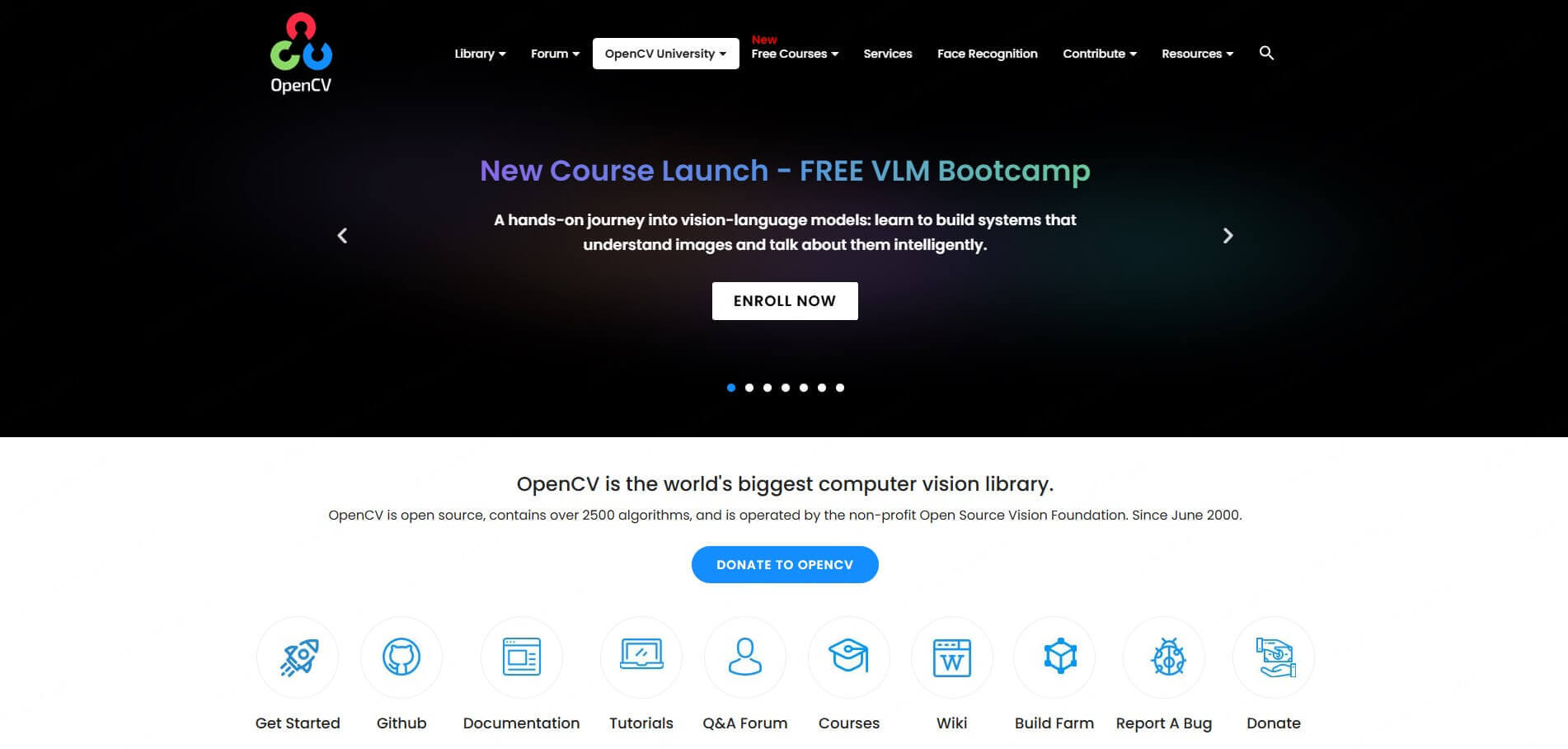
Key Features
- Vast collection of algorithms for image and video processing
- Supports object detection, feature extraction, and more
- Extensive documentation and strong community support
- Versatile and widely used in various computer vision applications
02 YOLO: Real-Time Object Detection
You Only Look Once (YOLO) is renowned as a highly efficient and accurate real-time object detection model. Considered a top model for AI-integrated video analytics, YOLO excels in processing videos quickly while maintaining high accuracy. Its architecture is specifically designed for speed, making it ideal for applications requiring real-time analysis, such as surveillance, autonomous driving, and robotics. Compared to other models, YOLO offers a superior balance of speed and precision in video analytics.
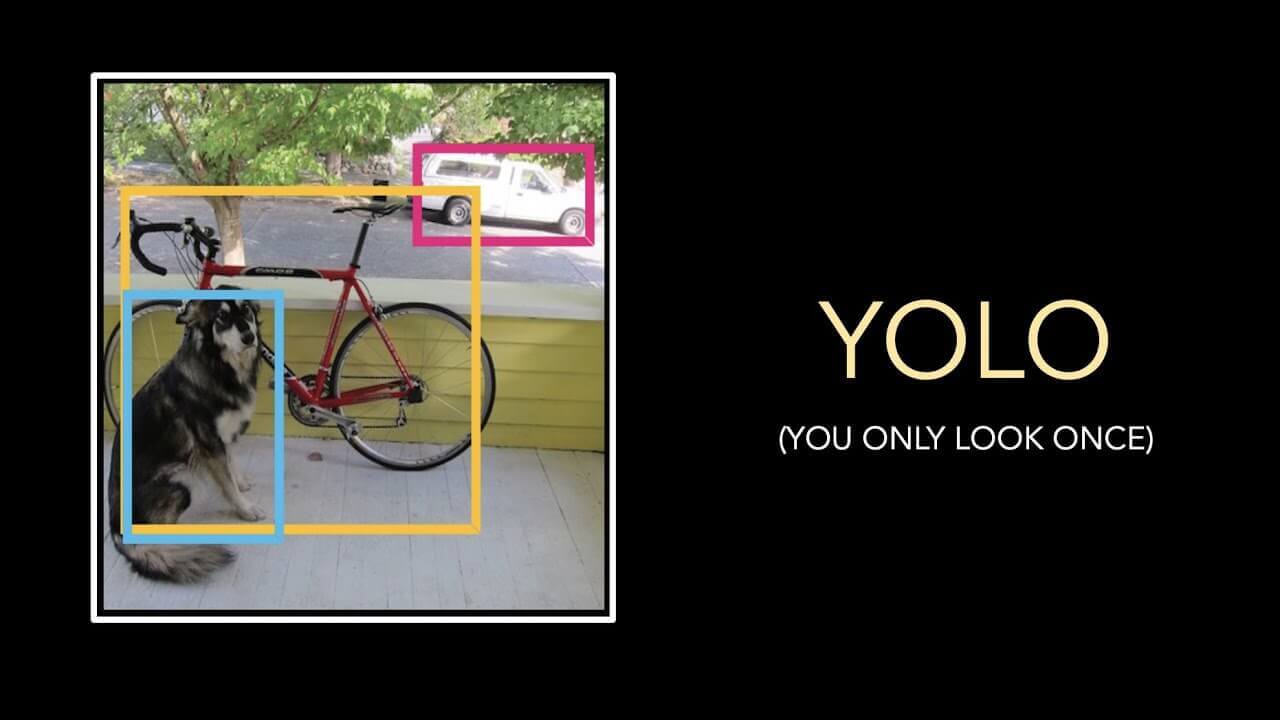
Key Features
- Highly efficient and accurate real-time object detection
- Designed for speed and real-time processing
- Ideal for surveillance, autonomous driving, and robotics
- Balances speed and precision effectively
03 TensorFlow: Comprehensive Machine Learning Framework
TensorFlow is a powerful open-source machine learning framework that is extensively used for building and deploying AI models, including those for video analysis. It provides a comprehensive ecosystem for developing deep learning models for various video-related tasks, such as video classification and action recognition. TensorFlow's flexibility and scalability make it suitable for complex video analysis projects, and it supports efficient processing of video data using techniques like data resizing and downsampling. Tutorials and resources are readily available to guide users in leveraging TensorFlow for deep learning on video data.
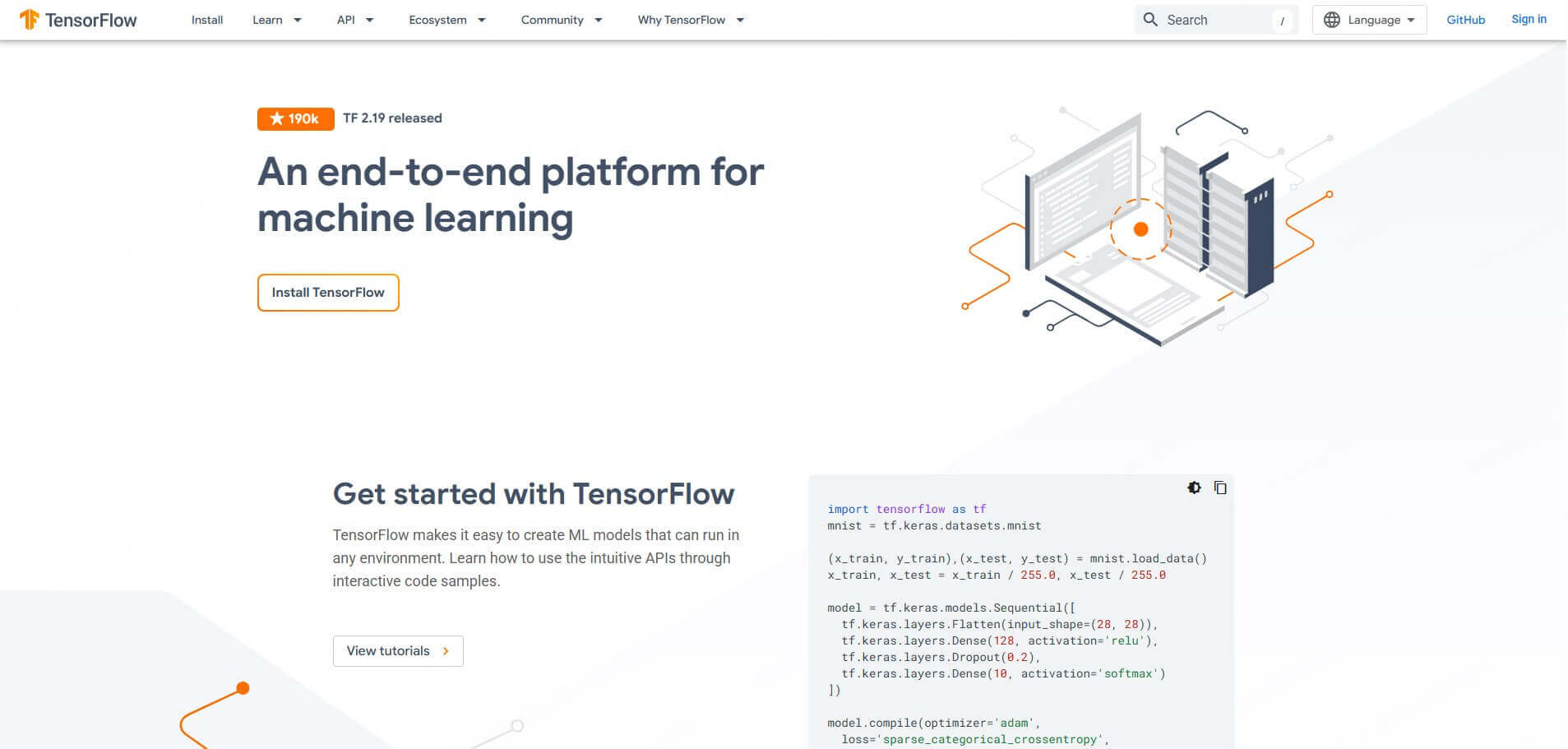
Key Features
- Comprehensive machine learning framework for AI model development
- Extensive ecosystem for deep learning and video analysis
- Scalable and flexible for complex projects
- Supports video classification, action recognition, and more
04 ELAN: Linguistic Annotation for Video Data
ELAN (EUDICO Linguistic Annotator) is an essential open-source tool specifically designed for the fine-grained annotation of video and audio data, particularly valuable in fields like conversation analysis and multimodal research. ELAN allows researchers to watch and analyze videos frame by frame, enabling precise annotation of linguistic and non-verbal behaviors. It supports the creation of video clips with precise start and end times, making it ideal for detailed video analysis in social sciences and humanities. While not directly an AI tool itself, ELAN is crucial for preparing and analyzing video data that can be used for training and evaluating AI models in behavioral analysis.
Key Features
- Specialized for fine-grained annotation of video and audio data
- Frame-by-frame analysis for precise annotations
- Supports creation of video clips with start and end times
- Crucial for preparing data for AI models in behavioral analysis
05 TagLab: AI-Assisted Annotation for Marine Research
TagLab is an open-source, human-centric AI system designed for interactive semantic segmentation, particularly oriented towards marine image and video data analysis. It streamlines the annotation process with AI-assisted tools like DEXTR (Deep Extreme Cut) and RITM (Positive-Negative Clicks Tool), which significantly speed up the creation of accurate annotations. TagLab is particularly useful in marine research, providing an efficient platform for annotating complex marine imagery and video for ecological and biodiversity studies. Its focus on human-in-the-loop workflows ensures both efficiency and accuracy in data annotation.
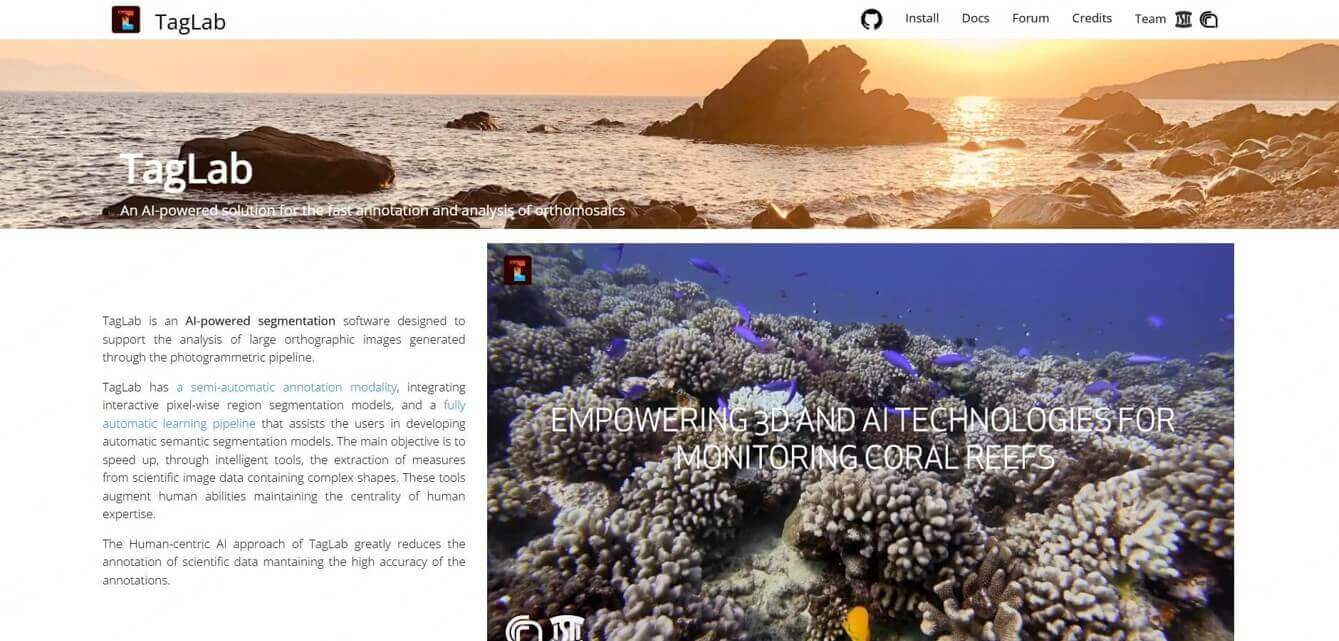
Key Features
- AI-assisted semantic segmentation tool
- Designed for marine image and video data analysis
- Uses tools like DEXTR and RITM to speed up annotation
- Human-in-the-loop workflow for efficient and accurate annotation
06 OpenVINO: Optimizing Deep Learning Models
OpenVINO (Open Visual Inference and Neural network Optimization) is an open-source toolkit from Intel designed to optimize and deploy deep learning models, including those used for video analysis, across various hardware platforms. It enables developers to accelerate AI inference, improving the performance of video analysis applications. OpenVINO supports real-time stream analysis demos, showcasing its capability to handle live video feeds efficiently. By optimizing models for Intel hardware, OpenVINO helps achieve faster and more efficient video processing, making it ideal for real-time applications and edge deployment.
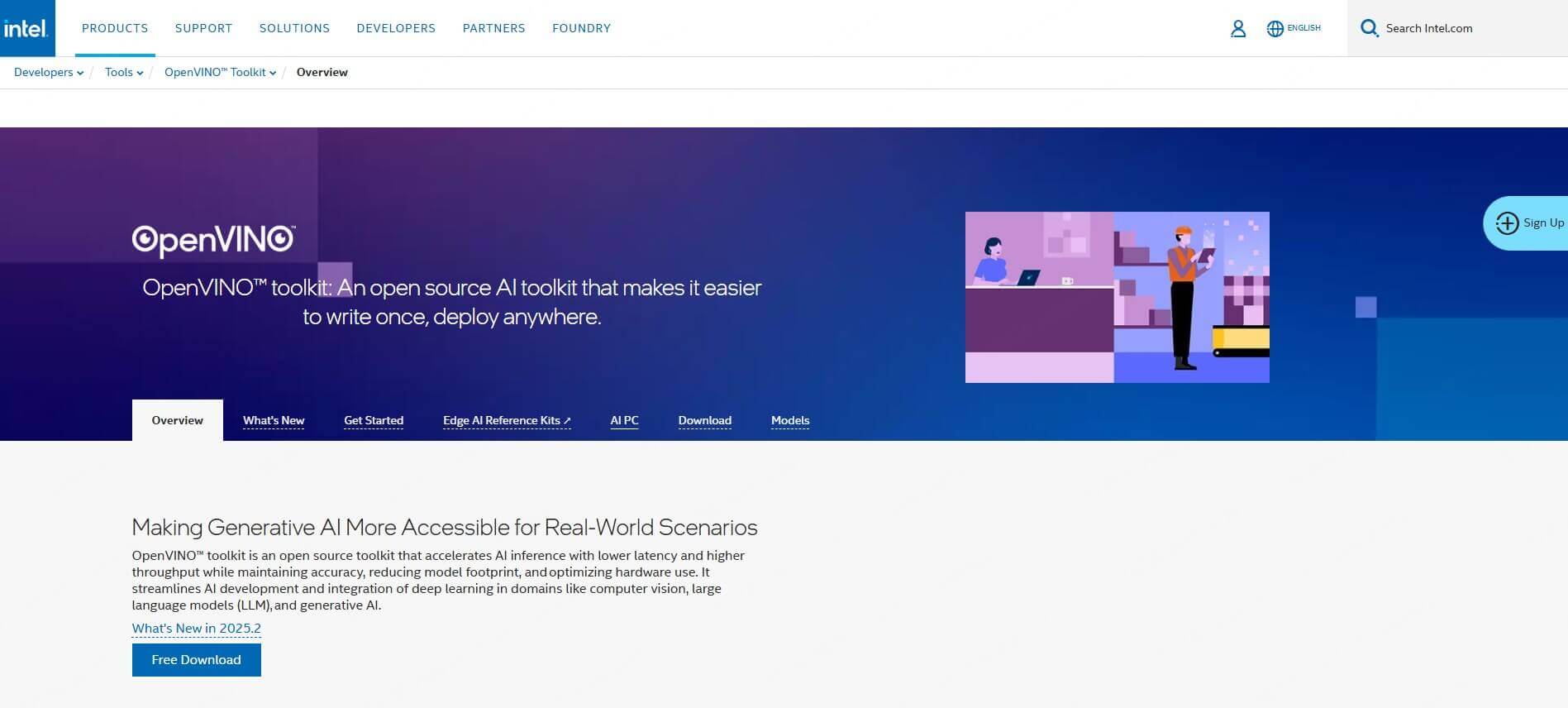
Key Features
- Toolkit for optimizing and deploying deep learning models
- Accelerates AI inference for video analysis
- Supports real-time stream analysis
- Optimizes models for Intel hardware for efficient processing
01 People Also Ask About AI Video Analysis
01 Can OpenAI summarize a video?
While OpenAI itself doesn't directly offer a dedicated video summarization tool in the same way as some specialized services, OpenAI models like GPT can be used in conjunction with other tools to achieve video summarization. For instance, you can use tools like OpenAI Whisper to transcribe the audio from a video and then use a language model like GPT to summarize the transcribed text.
Azure OpenAI also offers text summarization capabilities that can be applied to video transcripts. Therefore, while not a direct, out-of-the-box feature, OpenAI's technologies can be effectively integrated into video summarization workflows.
02 Can AI video analysis tools detect deepfakes?
Yes, AI video analysis tools are increasingly being developed and used to detect deepfakes. Several tools are emerging in 2025 that specialize in deepfake detection by analyzing videos for AI manipulation. These tools employ techniques like pixel-level analysis, pattern recognition, and mouth movement analysis to identify inconsistencies and artifacts indicative of deepfake videos.
Tools like Sensity, TrueMedia.org, and DuckDuckGoose are examples of platforms designed to detect deepfakes with high accuracy. Real-time analysis features are also becoming available, providing instant detection and visualization of manipulated content.
03 Are there any privacy concerns when using AI video analysis tools?
Yes, there are significant privacy concerns associated with the use of AI video analysis tools. The ability of AI to analyze videos in detail raises concerns about data privacy, especially regarding the collection, storage, and use of video data. Ethical considerations are paramount, and it's crucial to engage in dialogues about the responsible use of these technologies. Concerns include potential biases in AI algorithms, lack of accountability, and the need for user consent in data usage.
Regulations like the California Consumer Privacy Act and the Utah Artificial Intelligence and Policy Act reflect the growing emphasis on AI and data privacy. It's essential to consider ethical guidelines and privacy frameworks when deploying AI video analysis technologies.
Conclusion and Future Trends in AI Video Analysis
AI video analysis has rapidly evolved into a powerful and versatile technology with a wide array of applications. Open-source tools are driving innovation and accessibility in this field, empowering researchers and developers to explore and implement cutting-edge solutions. Looking ahead, future trends in AI video analysis are likely to focus on:
- Enhancing real-time processing capabilities
- Improving accuracy in complex scenarios
- Addressing ethical and privacy concerns
Advancements in deep learning models, coupled with increasing computational power, will continue to expand the possibilities of AI video analysis, making it an even more integral part of various industries and research domains.
Want to save time and money on AI video production? Meet LitVideo—a smart, multi-model video generator supporting features like AI lip sync and background music creation. Easily create high-quality content with automated model selection and without having to purchase several standalone tools.


















